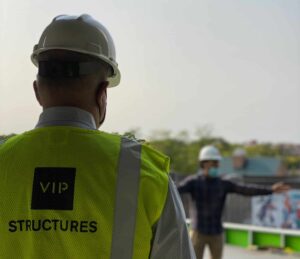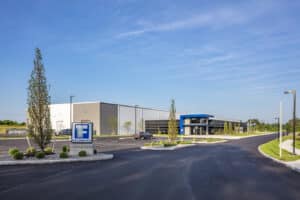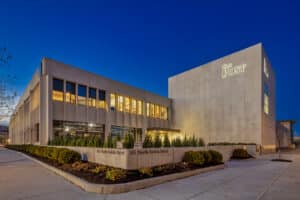The days of people sitting in cubicles all day are waning. Office environments have made tremendous strides in reinventing themselves to keep pace with market demands.
The idea is to create spaces within the work environment that are stimulating, innovative and energizing places to be. Work environments are infusing company culture and introducing nontraditional spaces, open floor plans, green spaces, community spaces, and so much more.
Here are a few interior design trends we are seeing that have had staying power and continue to gain momentum as companies look to stay relevant in today’s competitive market place.
#1 Experience Design Spaces
These spaces are unique and are often seen at colleges and universities to create a robust campus life and attract students. However, corporate America has taken notice of how these spaces can boost morale, cultivate community, overall wellness, and retention.
Experience Design Spaces Include:
Meditation areas
Yoga studios and walking/jogging trails
Rock climbing walls
Espresso and cocktail bars
Game rooms and virtual reality gaming spaces
#2 Open Office – Collaborative Space
This is not a new trend, but one that has staying power. Collaborative spaces are getting better as designers look to unique materials, finishes and furniture options to create a sense of space without the confinement of traditional walls and cubicle partitions.
Open Office – Collaborative Spaces Include:
Dynamic, multi-use meeting areas
Unconventional creative areas
Lots of glass
Portable green wall dividers
Lightweight mobile furniture
Plenty of desk space
Comfortable couches and chairs
#3 Old is New Again
This all started with private developers transforming old historic buildings into mixed-use apartment buildings. Now companies with their design teams have the perfect backdrop to create modern environments that incorporate the rustic warm and aged timbers and bricks that provide a sense of history, strength, and steadfastness that is hard to duplicate in new construction. The combination of old and new elements creates a space that is warm and welcoming yet spacious and vibrant.
Features Include:
Smooth and soft textures
Brilliant splashes of color
Old-world craftsmanship
Glass and metal
Modern furniture and office equipment
#4 Bringing the Outside In
We have talked about this in a blog post a few months ago in our discussion about Biophilic design. The essence of Biophilic design is to take cues from nature incorporating patterns and forms seen in nature into the built environment. The biophilic design creates a connection between nature and manmade environments. The characteristics of this design trend can be seen in WELL Certified and LEED Certified buildings.
Elements of this trend include:
Living green walls
Natural/organic materials
Natural lighting
Thermal comfort and high-quality ventilation
Visual connection with nature
Interior designers continue to push the boundaries of our interior spaces. The goal is to go beyond the expected and to dive into timeless, dynamic and engaging spaces that capture the essence of its users.
Learn More about VIP Structures
Our company specializes in architecture, engineering, construction, and development as a fully integrated design-build firm to help organizations with building needs all across Upstate New York.
Interested in learning more about our services at VIP Structures? Visit us on the web at www.vipstructures.com or contact us below by filling out our short form fill. Subscribe to our blog to get the latest news about what is happening in the A/E/C/D world.



